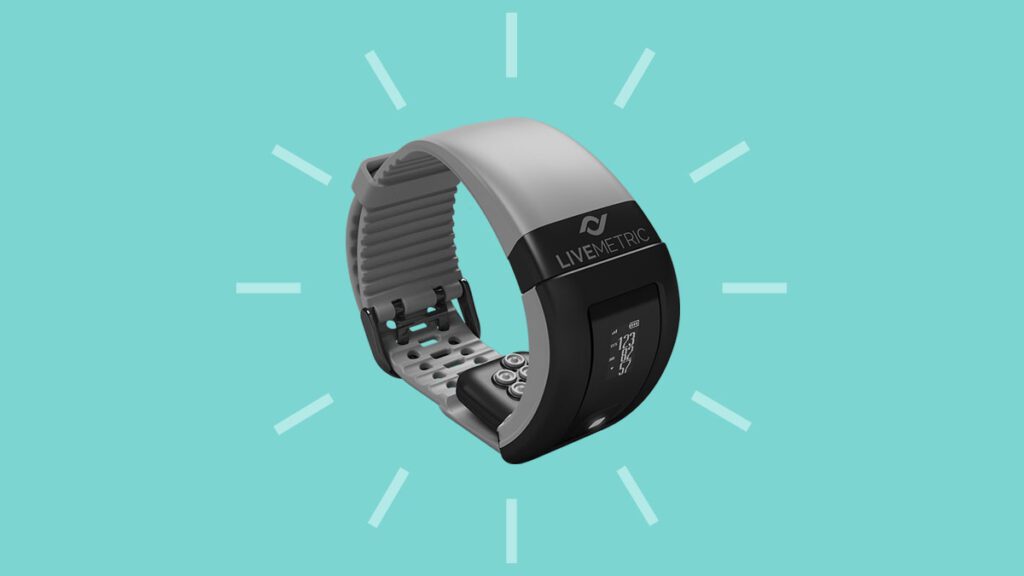
Wearable technology has become an essential component of our daily life, especially for chronic diseases such as diabetes and hypertension. Driven by advances in communications and computing and improved sensor accuracy, smartwatches have become real diagnostic tools capable of measuring vital signs while providing insights into our medical conditions. Efficiently measuring blood pressure with clinically proven accuracy has been a daunting task for smartwatch manufacturers. Many fitness trackers and smartwatches available on the market have developed such capability using the array of embedded sensors, however most of them did not get the Food and Drug Administration (FDA) approval. To this end, LiveMetric has recently announced receiving the FDA clearance for its watch-like wearable blood pressure monitoring solution, the LiveOne. The announced news is a potential bliss for chronic hypertension patients, notably as far as managing their conditions continuously with time.
The LiveOne Solution
Traditional medical grade blood pressure monitoring technology relies on cuffs that wrap around the arm. The cuff is then inflated manually or automatically until it fits tightly around the arm. Once it starts deflating, systolic and diastolic pressures are recorded giving the patient the two known readings used to estimate his condition.
The LiveOne wearable provides the same accuracy without the need for the bulky cuff, but also allowing continuous measurements that are taken every 10 seconds. According to the company’s press release, the pressure waveform out of the radial artery, the blood vessel that supplies blood to the hand, is recorded. The new design allows 24-hour ambulatory blood pressure measurements (ABPM) in addition to longer period blood pressure monitoring.
The blood pressure wearable relies on an array of nano-sensors built using microelectromechanical systems (MEMS) technology. The output from these miniaturized sensing devices is processed by machine learning algorithms to determine the blood pressure values.
The results of a study involving the LiveOne device were published in article in the American Journal of Hypertension. The measurements collected from the device were compared to A-line measurements, that is, where blood pressure is measured through a radial artery intra-arterial catheter. Measurements using both techniques showed high correlation which indicates a notable accuracy in the readings of the wearable device.
A Promise to Hypertension Patients
The new device provides high hopes for individuals suffering from hypertension. Hypertension is a silent disease which means that not everyone having it, actually know they do. According to the world health organization (WHO), less than half of the adults with hypertension are diagnosed and treated. Besides its impact on the heart, brain, and kidneys, hypertension is one of the causes of premature death.
The possibility of having a wearable device that provides continuous blood pressure measurements is important towards discovering hypertension issues at the earliest. In the case of individuals with confirmed hypertension, the device allows a proper management of the medical condition including the efficiency of the administered medical treatment. In a nutshell, with the FDA-approval and the reported accuracy, the LiveOne device is a bliss for hypertension patients.
The Omron HeartGuide: An FDA-Approved Competitor
The LiveOne wearable blood pressure measuring device is not the only product with FDA-approval on the market. The Omron HeartGuide is another FDA-approved device that provides continuous blood pressure measurements. Omron tries to replicate oscillometry principles used in automatic cuff devices to a smartwatch. The key to this is the miniaturization of several components involved in traditional oscillometric measurements. The blood pressure measurements are recorded every 30 seconds compared to the 10 seconds of the LiveOne. However, the HeartGuide provides all the functionalities of a smartwatch including activity tracking, sleep monitoring and other additional features. The blood pressures measurements using the Omron requires the subject to raise the wrist to be at heart level, the embedded cuff will then inflate and the procedure continuous like traditional measurement techniques until the reading is displayed on the screen. When the LiveOne becomes commercially available, the comparison with the Omron solution would be particularly interesting !
“Inside Telecom provides you with an extensive list of content covering all aspects of the tech industry. Keep an eye on our MedTech and Technology space to stay informed and up-to-date with our daily articles.”